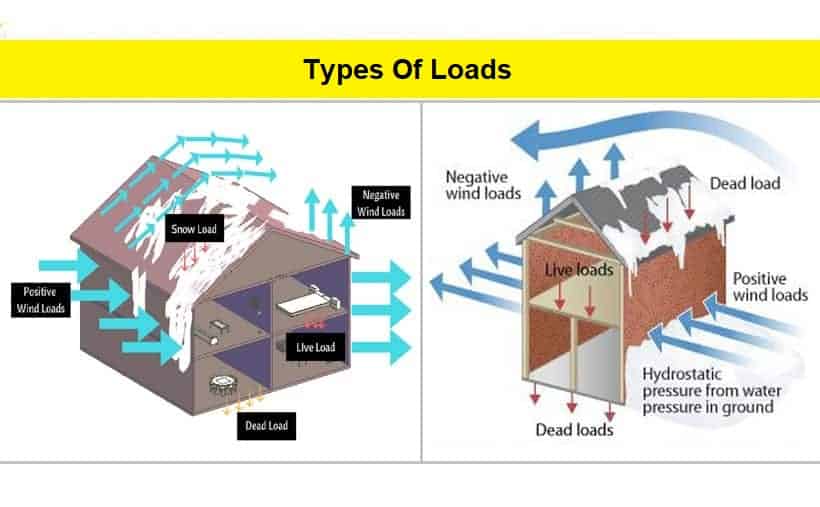Building Strong Foundations: A Deep Dive into Types of Load in Civil Engineering

Civil engineering plays a crucial role in shaping the infrastructure that supports society’s needs. Central to this discipline is the understanding of various types of loads that structures endure. From the weight of the structure itself to environmental forces and dynamic loads, engineers must consider a multitude of factors to ensure the durability and safety of civil engineering projects. In this article, we delve into the intricacies of different Types Of Load In Civil Engineering, exploring their significance, effects, and implications for design and construction.
Types of Load in Civil Engineering:
Dead Loads:
Dead loads refer to the weight of the structure itself and any permanent fixtures or components. These loads are static and include elements such as walls, floors, roofs, and foundational materials. Dead loads are fundamental in structural analysis and design, serving as the basis for evaluating the stability and capacity of a building or infrastructure.
Dead loads are fundamental components of structural analysis in civil engineering. They represent the static weight of the structure itself and any permanent fixtures or components, such as walls, floors, roofs, and foundational materials. Dead loads remain constant over time and serve as the foundation for evaluating the stability and capacity of a building or infrastructure.
In civil engineering, accurately calculating dead loads is essential for designing safe and reliable structures. Engineers must consider factors such as material densities, dimensions, and configurations to determine the magnitude and distribution of dead loads. By understanding and accounting for dead loads, engineers can ensure that structures can support their own weight and any additional loads they may encounter during their lifespan.
Dead loads play a critical role in structural design, providing the baseline for assessing structural integrity and stability. By accurately estimating and incorporating dead loads into their designs, civil engineers can create buildings and infrastructure that withstand the test of time, contributing to the safety, functionality, and longevity of the built environment.
Live Loads:
Live loads are dynamic forces resulting from the occupancy or use of a structure. Examples include the weight of people, furniture, vehicles, or equipment within or on the structure. Engineers must consider live loads to ensure that structures can support varying weights and activities without compromising safety or functionality.
Environmental Loads:
Environmental loads encompass external forces exerted by natural elements such as wind, snow, rain, temperature fluctuations, and seismic activity. These loads can vary significantly based on geographical location, climate conditions, and local regulations. Civil engineers employ advanced analysis techniques and design standards to assess and mitigate the impact of environmental loads, ensuring structural resilience and longevity.
Impact Loads:
Impact loads arise from sudden, impulsive forces applied to a structure, often exceeding the typical static or dynamic loads it experiences under normal conditions. Examples include vehicular collisions, machinery malfunctions, or falling objects. Civil engineers must account for potential impact loads in design to prevent structural failure and minimize the risk of accidents or damage.
Thermal Loads:
Thermal loads result from temperature variations within a structure, leading to expansion, contraction, and thermal stress. Materials expand when heated and contract when cooled, exerting internal forces that can affect structural integrity. Thermal loads are significant in civil engineering projects involving materials with different coefficients of thermal expansion, requiring careful consideration during design and construction.
Seismic Loads:
Seismic loads, also known as earthquake loads, result from ground motion caused by seismic activity such as earthquakes or tremors. These loads subject structures to horizontal and vertical accelerations, causing them to sway or vibrate. Civil engineers utilize seismic design principles and codes to ensure that buildings and infrastructure can withstand seismic forces and minimize the risk of collapse or damage during earthquakes.
Conclusion:
Understanding the diverse types of load in civil engineering is essential for creating robust and resilient structures that withstand the test of time. From dead loads and live loads to environmental, impact, thermal, and seismic loads, engineers must consider various factors to ensure structural integrity and safety. By incorporating advanced analysis techniques and adhering to stringent design standards, civil engineers can develop innovative solutions that meet the evolving needs of society while enhancing safety and sustainability. Types of load in civil engineering form the foundation of infrastructure development, shaping communities and facilitating economic growth.





